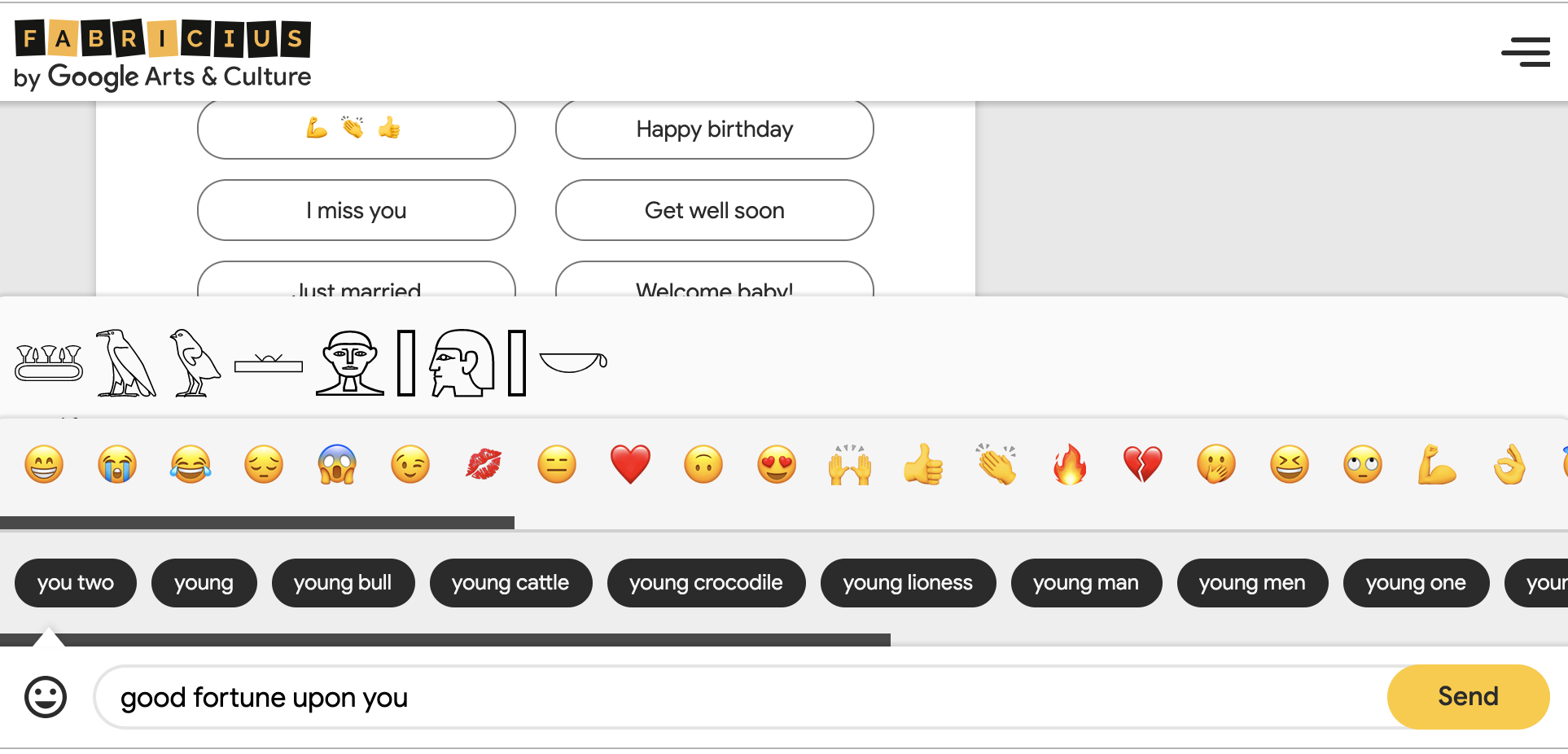A unique partnership between Macquarie and Google gives cultural researchers the opportunity to showcase their research to a global audience.
Macquarie is the first university to feature among 2000 cultural institutions on Google Arts and Culture, a platform designed to make the world’s culture freely accessible online.
The Faculty of Arts’ first major collaboration with the tech giant was a partnership between the Department of Ancient History, Ubisoft and Google, which led to the recent launch of an AI-powered interactive hieroglyph translation tool.
By applying artificial intelligence to the task of translating hieroglyphs – a process that has changed little since the discovery of the Rosetta stone some 220 years ago – Fabricius may help make Egyptologists’ work tracing, transliterating and translating hieroglyphs more efficient, and support students’ learning of the ancient language.
Dr Brian Ballsun-Stanton, Solutions Architect in Digital Humanities, and Dr Alex Woods from the Department of Ancient History, applied their expertise to ensure the project would be valuable for academics and students alike. The public can also feed their fascination with ancient Egypt by learning more about hieroglyphs using the tool.

The Fabricius tool allows people to send their friends messages in Hieroglyphs, alongside its research and teaching applications
Other researchers are recognising the opportunity to feature their work on Google Arts and Culture, making it accessible to new audiences. Professor Javier Alvarez-Mon’s research into stone reliefs of the ancient Elamites (ca. 4200-525 BC), now has its own place on the platform, which he and his project collaborator Dr Yasmina Wicks, also a specialist in the archaeology of Elam, hope will lead to greater recognition for the importance of these cultural artefacts.
"Google Arts and Culture provides the ideal platform to showcase the artistic and cultural achievements of the Elamite civilization which was broadly located in today’s southwest Iran,” said Professor Javier Alvarez-Mon.
“One of the most distinctive aspects of Elam’s artistic production is a series of monumental reliefs carved in open-air highland sanctuaries. Together with Dr Wicks and Dr Brian Ballsun-Stanton, I’m aiming to make these difficult-to-access carvings and my research readily available to an international audience in an engaging way.
“We hope that the Google Arts and Culture project will draw attention to Macquarie’s cutting-edge research into the ancient Near East and highlight the value of the Elamite reliefs and the necessity of protecting and preserving them for future generations by having them included in the UNESCO World Heritage List."
The Kul-e Farah relief, one of the sites Professor Javier Alvarez-Mon and Dr Yasmina Wicks have featured on Google Arts and Culture
Dr Brian Ballsun-Stanton said he is excited to explore the possibilities to take the platform in different directions and feature a wide variety of research.
“Google Arts and Culture is an amazing opportunity for researchers at Macquarie. If research involves capturing pictures, audio recordings, or video, the platform provides us tremendous reach to get our research (and, importantly, pretty pictures of our research) out worldwide,” he said.
“Researchers like Javier Alvarez-Mon, Yasmina Wicks, Linda Evans, and Alex Woods have all made stories about their research in the ancient world. But this platform is not only for Ancient History! I’m keen to talk to researchers with stories to tell across the faculty and across the university to see how they can present a story about their research to the world.”
Set up a time with Brian: https://calendly.com/brian-ballsun-stanton/30min